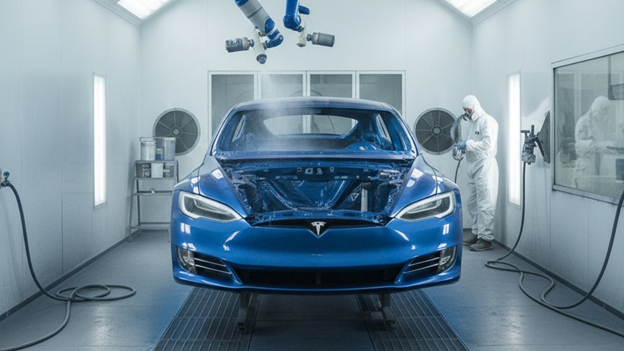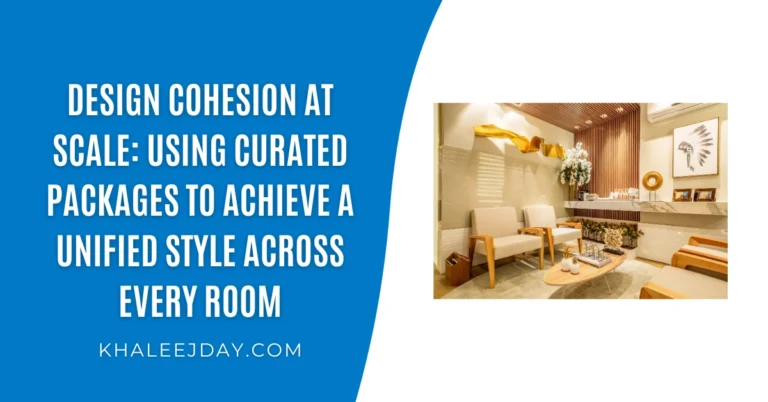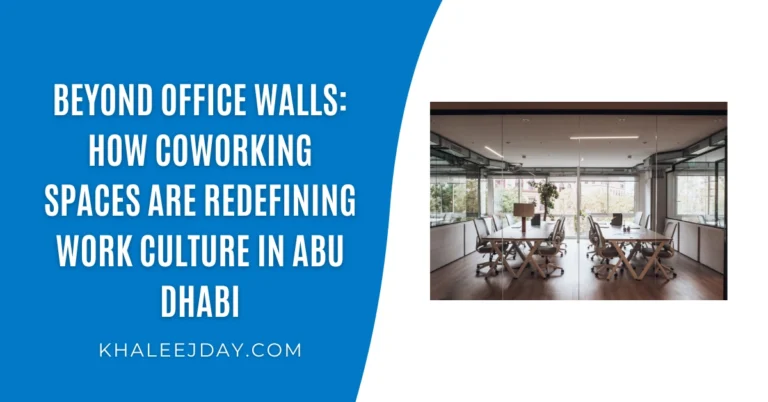Tesla’s Multi-Layer Paint Technology Explained: Why It’s Harder to Repaint
Tesla’s approach to vehicle manufacturing represents a fundamental departure from traditional automotive production methods, and nowhere is this more evident than in their sophisticated multi-layer paint technology. While the sleek, lustrous finish on Tesla vehicles appears deceptively simple, the reality involves an extraordinarily complex coating system that presents unique challenges for repair and refinishing. For Tesla owners in Dubai who may require paint repair due to minor accidents, stone chips, or environmental damage from the harsh desert climate, understanding why Tesla repainting is more complicated than conventional vehicles helps explain the specialized expertise and equipment required at qualified facilities. The combination of advanced paint chemistry, precise application processes, environmental considerations, and Tesla’s exacting quality standards creates a situation where not every body shop can successfully match the factory finish, making the selection of an experienced tesla bodyshop Dubai facility crucial for maintaining vehicle appearance and value.

Understanding Tesla’s Revolutionary Paint System Architecture
Tesla’s paint system represents a significant evolution from traditional automotive finishing processes, incorporating multiple specialized layers that each serve distinct functional and aesthetic purposes. This sophisticated approach begins with extensive surface preparation that goes beyond conventional standards, ensuring optimal adhesion and corrosion protection for the aluminum body panels predominantly used in Tesla construction.
The foundation layer consists of an advanced electrocoat primer applied through a cathodic electrodeposition process that provides superior corrosion resistance compared to traditional spray-applied primers. This electrocoating process involves immersing the entire body structure in a specially formulated primer bath while applying an electrical charge that causes the coating material to bond uniformly to all exposed metal surfaces, including complex recesses and enclosed cavities that conventional spray methods cannot adequately reach. The resulting primer layer provides exceptional corrosion protection essential for vehicle longevity, particularly important in Dubai’s coastal environment where salt-laden humidity creates corrosive conditions.
Following the electrocoat primer, Tesla applies multiple layers of specialized coatings including color basecoats, effect layers for metallic or pearl finishes, and finally multiple clearcoat layers that provide the distinctive deep gloss appearance Tesla vehicles are known for. Each layer serves specific purposes beyond simple aesthetics, incorporating UV protection to prevent color fading in extreme sunlight, chemical resistance to environmental contaminants, and mechanical properties that provide stone chip resistance and self-healing characteristics in some applications.
The clearcoat system deserves particular attention, as Tesla utilizes multiple clearcoat layers with different properties rather than the single or dual clearcoat approach common in conventional automotive finishing. These layers work synergistically to provide depth of gloss, environmental protection, and durability, but they also create significant challenges when attempting to replicate the factory finish during repair procedures. The total paint system thickness on Tesla vehicles typically exceeds that of conventional automobiles, with some areas featuring combined coating thickness approaching 150-200 microns compared to the 100-120 microns common in traditional automotive finishing.
The chemical composition of Tesla’s paint materials represents proprietary formulations developed specifically for their manufacturing processes and performance requirements. These specialized materials incorporate advanced resin systems, unique pigment technologies, and sophisticated additives that provide the desired appearance and durability characteristics but may not be readily available through conventional automotive refinishing supply channels.
The Complexity of Color Matching Tesla’s Unique Finishes
Color matching represents one of the most significant challenges when repainting Tesla vehicles, particularly for the distinctive colors that have become synonymous with the brand. While conventional automotive refinishing relies on established color databases and mixing systems developed over decades, Tesla’s relatively recent entry into automotive manufacturing and their unique paint formulations create situations where standard color matching procedures often prove inadequate.
Tesla’s color palette includes several distinctive finishes that present particular challenges for repair facilities. The popular Pearl White Multi-Coat finish, for example, incorporates multiple layers of pearl pigments that create depth and color shift effects depending on viewing angle and lighting conditions. Successfully matching this finish requires not only identifying the correct base color but also replicating the pearl effect layers and their precise application parameters, a process that demands specialized knowledge and experience.
The various metallic finishes offered by Tesla, including Midnight Silver Metallic, Deep Blue Metallic, and others, incorporate aluminum flake pigments with specific size distributions and orientations that create their characteristic sparkle effect. The appearance of these metallic finishes depends critically on application technique, including spray gun settings, application pressure, and the number of coats applied, making consistent color matching exceptionally challenging even when using correct paint formulations.
Solid colors like the distinctive Tesla Red might appear simpler to match, but the reality involves complex pigment systems and multiple coat buildups that must be precisely replicated to achieve seamless blending between repaired and original factory finish. The multi-layer clearcoat system adds another dimension to color matching complexity, as variations in clearcoat application can affect the perceived color and appearance of the underlying basecoat layers.
Environmental factors in Dubai further complicate color matching challenges. The intense UV exposure and extreme temperatures can cause subtle color shifts in existing paint over time, meaning that newly applied paint matching the original factory specification may not match the aged finish on the rest of the vehicle. Experienced car painting dubai specialists must account for this aging effect when formulating repair paint to ensure seamless blending.
The specialized equipment required for accurate Tesla color matching goes beyond conventional spectrophotometers used in automotive refinishing. Advanced color analysis systems capable of measuring multi-angle color characteristics become necessary for metallic and pearl finishes, while proper evaluation requires controlled lighting conditions that replicate various viewing scenarios including direct sunlight, shade, and artificial lighting.
Advanced Application Techniques and Environmental Requirements
The process of applying Tesla paint formulations requires sophisticated equipment and precise environmental control that exceeds the capabilities of many conventional body shops. Tesla’s factory paint application involves robotic precision and carefully controlled conditions that are difficult to replicate in repair environments, but achieving acceptable results demands adherence to exacting standards.
Spray equipment requirements for Tesla refinishing include high-efficiency HVLP (High Volume Low Pressure) or LVLP (Low Volume Low Pressure) spray guns capable of atomizing the specialized paint materials while minimizing overspray and achieving the fine finish quality Tesla owners expect. Gun selection, nozzle size, air pressure settings, and application techniques must be precisely calibrated for each specific paint layer and color formulation.
The paint booth environment becomes critical for successful Tesla refinishing. Temperature control within narrow ranges, typically 20-25°C, ensures proper paint flow and leveling characteristics while maintaining appropriate flash-off times between coats. Humidity control prevents moisture contamination that can cause defects in the finish, while sophisticated filtration systems remove airborne contaminants that could mar the surface. The air circulation patterns within the booth must provide uniform conditions across the entire painted surface while efficiently removing overspray and solvent vapors.
Application technique requires specialized training and experience specific to Tesla paint systems. The basecoat application involves multiple light coats applied with precise timing between layers to build color depth while avoiding runs or sags. For metallic and pearl finishes, the final basecoat application technique critically affects the orientation of effect pigments and therefore the final appearance, requiring skill and experience to achieve results that match the factory finish.
The clearcoat application process for Tesla vehicles involves multiple layers applied in specific sequences with carefully controlled flash-off times between coats. Each clearcoat layer must achieve proper wet film thickness while maintaining adequate flow to eliminate orange peel texture, yet avoid excessive thickness that could cause runs or extended curing times. The final clearcoat layer receives particular attention as it determines the ultimate surface appearance and gloss characteristics.
Curing and baking procedures represent another area where Tesla refinishing diverges from conventional practice. While many traditional automotive paints air-dry at ambient temperatures over extended periods, achieving optimal properties in Tesla paint systems often requires elevated temperature baking cycles. The paint booth must be capable of reaching and maintaining specific cure temperatures, typically 60-80°C, for prescribed time periods to ensure complete crosslinking of the paint chemistry and development of full mechanical properties and appearance characteristics.
The Challenge of Blending and Seamless Integration
Perhaps the most demanding aspect of Tesla paint repair involves achieving invisible blending between newly painted areas and the existing factory finish. The multi-layer paint architecture and distinctive appearance characteristics of Tesla finishes make traditional blending techniques less effective, requiring adapted approaches and exceptional skill.
The panel blending process for Tesla vehicles must account for the multiple distinct layers in the paint system. Simply blending the top clearcoat layer, as might suffice for conventional refinishing, proves inadequate when the underlying basecoat and effect layers exhibit different characteristics between factory and repair areas. Successful blending often requires extending the repair area beyond the damaged zone to achieve gradual transition zones where differences become imperceptible.
For metallic and pearl finishes, blending becomes particularly challenging due to the directional nature of effect pigments. The orientation of aluminum flakes or pearl particles in factory-applied paint may differ from that achievable in repair applications due to differences in application equipment and technique. Skilled technicians must develop strategies to minimize these differences through careful control of spray techniques in transition zones.
The multiple clearcoat layers characteristic of Tesla finishing create additional blending complications. Achieving proper gloss and appearance match requires not only correct material application but also precise control of final clearcoat thickness to match the surrounding areas. Too little clearcoat results in insufficient gloss and depth, while excessive clearcoat creates thickness differences that become visible under certain lighting conditions and may cause issues with subsequent polishing or correction procedures.
Edge treatment where new paint meets existing finish requires exceptional attention to detail. The transition must be feathered sufficiently to prevent visible ridges or steps while maintaining adequate coating thickness for durability. This delicate balance becomes even more critical with Tesla’s relatively thick paint systems where conventional feathering techniques may create unacceptably wide transition zones.
Why Specialized Tesla Body Shop Expertise Matters in Dubai
The unique aspects of Tesla paint technology, combined with Dubai’s specific environmental challenges, make the selection of an appropriate repair facility critically important for maintaining vehicle appearance and value. Not all body shops possess the necessary expertise, equipment, and materials to successfully refinish Tesla vehicles to factory standards.
Dubai’s extreme climate creates additional complexity for Tesla paint repair. The intense heat and UV exposure require paint formulations and application techniques adapted to local conditions, while fine sand and dust particles present contamination challenges during the painting process. Experienced tesla bodyshop dubai facilities understand these environmental factors and implement appropriate procedures to ensure successful outcomes.
The investment required for proper Tesla refinishing capability extends beyond conventional body shop equipment. Specialized spray guns, advanced color matching systems, precisely controlled paint booths, and appropriate baking equipment represent substantial capital investments that only facilities committed to Tesla repair will undertake. Additionally, maintaining an inventory of Tesla-specific paint materials and access to specialized formulations requires established relationships with appropriate suppliers.
Technician training and certification represent another critical differentiator among repair facilities. Successfully refinishing Tesla vehicles requires understanding of the unique paint system architecture, experience with specific application techniques, and familiarity with Tesla’s quality standards. Facilities that invest in ongoing technician training and maintain relationships with Tesla or authorized suppliers demonstrate the commitment necessary for consistent quality results.
The quality assurance process for Tesla paint repair should include careful inspection under various lighting conditions, gloss measurement to verify match with surrounding areas, and verification of paint thickness to ensure adequate protection while avoiding excessive buildup. Reputable facilities document their work and provide warranties that reflect confidence in their capabilities.
Material selection becomes crucial for repair longevity and appearance retention. While aftermarket paint systems may offer lower cost alternatives, they may not provide the same durability, color stability, or appearance characteristics as Tesla-specific formulations. Quality-focused repair facilities prioritize appropriate materials even when they involve higher costs, understanding that successful repairs ultimately depend on using suitable products.
The environmental impact of paint operations has become increasingly important in Dubai and throughout the UAE. Modern paint systems and application techniques that minimize volatile organic compound (VOC) emissions align with evolving environmental regulations while also providing improved working conditions and reduced environmental impact. Advanced facilities invest in appropriate emission control equipment and utilize compliant paint systems that meet both performance and environmental requirements.
For Tesla owners facing paint repair needs, whether from collision damage, stone chips, vandalism, or environmental damage, selecting an experienced car painting dubai facility with demonstrated Tesla expertise provides the best opportunity for achieving factory-quality results. The initial investment in quality repair pays dividends through maintained vehicle appearance, preserved resale value, and avoided complications from inadequate repair work that may require correction.
The complexity of Tesla’s multi-layer paint technology represents both a testament to the company’s innovation in vehicle manufacturing and a challenge for the aftermarket repair industry. As Tesla’s presence in Dubai continues growing, the availability of qualified repair facilities with appropriate expertise becomes increasingly important. Understanding why Tesla repainting is more complex than conventional vehicle refinishing helps owners make informed decisions about repair facilities and sets appropriate expectations for the repair process, ultimately contributing to satisfaction with the ownership experience and maintenance of these remarkable vehicles.





